Are Sea Sponges Alive & Living? And More Related Things To Know
Although Sea sponges look like non-living rocky structures attached to their substratum. But, the reality is that they are simple multicellular organisms with only a cellular level of body organization.
They don’t have any kind of tissue or organ, but only cells. Their body structure is supported by the spicules with various cells attached to it.
They belong to Phylum Porifera which also characterizes as ‘pore-bearing’ animals. The name Porifera means ‘pore bearer’ in Latin.
It’s called so because they have very tiny pores present in their body which are the basic structures in their functional activities.
The sponge is covered with tiny pores, called ostia, which internally lead to a system of canals and eventually out to one or more larger holes, called oscula. This makes their body canal system work efficiently.
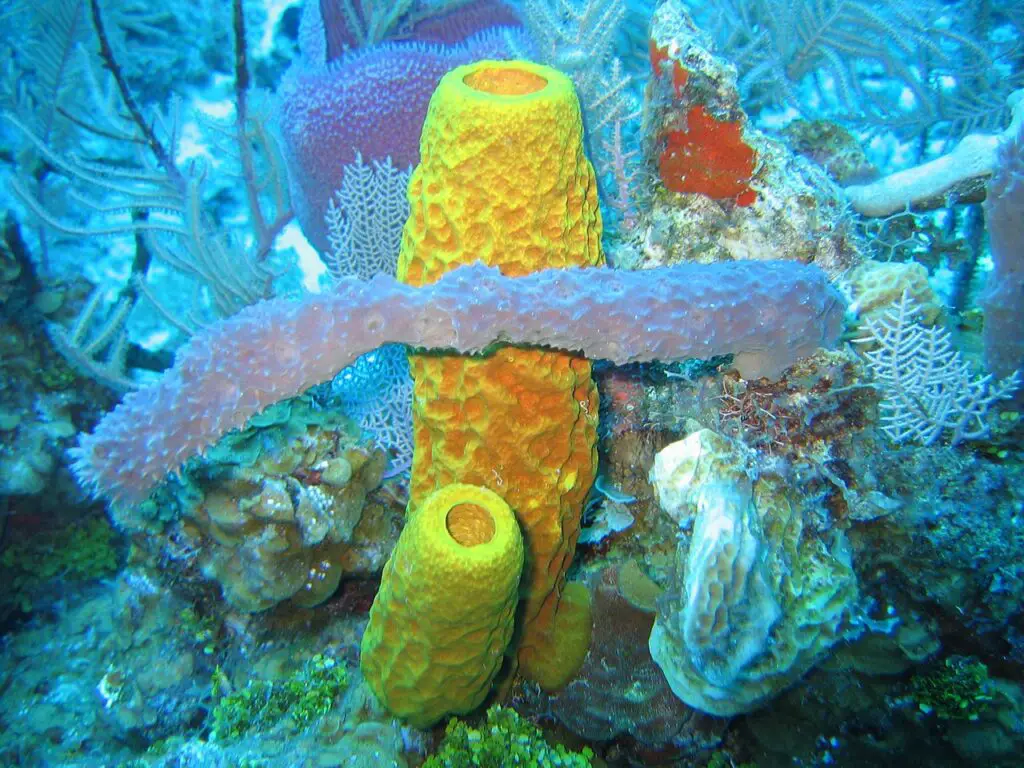
Are sea sponges alive?
Yes, sea sponges are alive. Although they look like non-living things but, they are actually simple living organisms. They live in the water and remain adhered to the floor of the oceans, sea, and freshwater rivers.
They have living eukaryotic cells in their body and the cells show all the important cell organelles and structures that are usually seen in the living organisms.
They have genes that can replicate, transcribe, and translate. Their genomes contain many genes that are homologs of those involved in humans. Just like they have genes that are also homologs to human cancer development gene pattern.
Also, a wide majority of sponge proteins that are transcribed and translated from their genes during the gene expression process possess the same domain organization as their homologs from higher metazoans living organisms.
Almost 99% of all sponges live in marine water, while some sponges that are made up of spongin fiber are freshwater species as well.
They do highly remain attached to a surface substratum located deep in the sea-bed or anywhere in the coral reefs.
Sponges can be attached to surfaces anywhere as deep as 8 km in the ocean on the bottom of the ocean floor. It’s totally rare that you will find any sponge growing above the surface of the water.
They are mostly seen in the tropical warmer sea waters. They do like to live in clearer waters over murky waters formed by currents.
They stay in the benthic zone of the oceans and remain fixed to their substratum in the ocean bed. From there they take part in all of the essential activities they need to do in relation to other organisms or the surrounding marine environment.
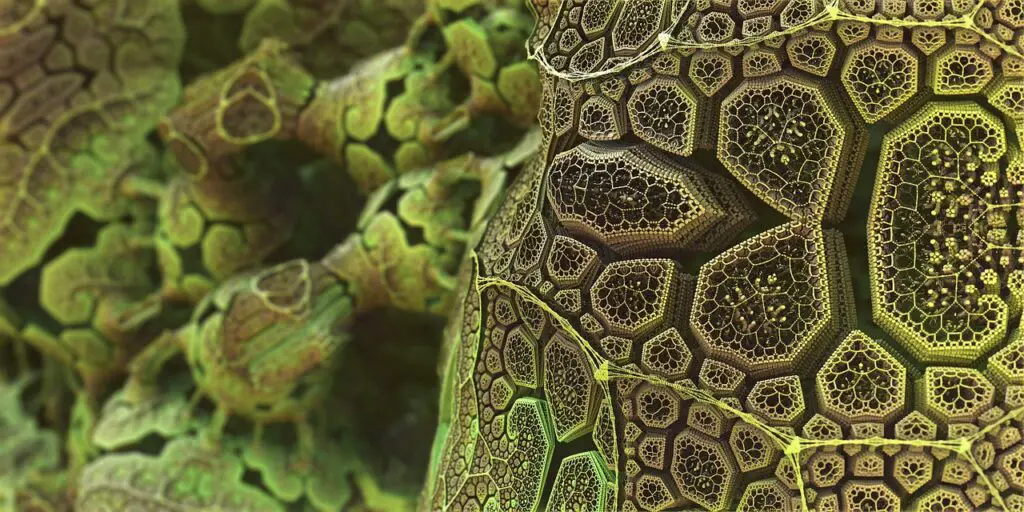
Reasons why and how sea sponges are considered alive
Sponges capture their food to eat
Yes, sponges can eat, excrete, and can do a lot more things. It’s possible because of their Canal system which is also known as aquiferous system.
The canal system of sponges helps in food acquisition, respiratory gas exchange, and also in excretion. This canal system is formed by the pores on their body surface which internally lead to a system of canals, spongocoel, and eventually out to one or more larger holes.
This canal system plays the most vital role in the physiology of the sponges which is played by the water current on which their life depends.
All exchanges between the sponge body and the external medium are made possible by means of the water current flowing through their canal system.
Food and oxygen are brought into the body and excreta and reproductive bodies are carried out. This current is caused by the beating of flagella of the collar cells.
They belong to Phylum Porifera
Yes, the sponges are those animals that belong to the phylum Porifera and Infrakingdom Parazoa of the Animal Kingdom.
These are multicellular organisms with the cellular level of body organization. No distinct tissues or organs are present.
They are 99% marine, a few freshwater species, and all aquatic in nature. All are sessile and fixed living in nature.
Their body wall is differentiated into outer pinacoderm (dermal epithelium), inner choanoderm (gastral epithelium), and gelatinous non-cellular mesenchyme in between.
Their body wall contains pores (ostia) that leads to canals and chambers that serve for the flow of water. One or more water exits called oscula are present.
Their digestion is all intracellular and, no respiratory or excretory organs are present.
All sponges are hermaphrodite (having both male and female sex organs in one body) but, cross-fertilization is the only rule of sexual reproduction.
These above-mentioned characters show that they are all living organisms that belong to Phylum Porifera.
They posses living cells
All sponges possess the living eukaryotic type of cells. They all have cells that are independent of each other but work together in a colony.
It is possible for one single sponge cell to survive, reproduce, and create a whole new sponge colony. That’s the power of one single cell in any sea sponge.
Sponges have various principal types of cells that may be distinguished as choanocytes, porocytes, amoebocytes, and pinacocytes.
The mesohyl which is the gelatinous matrix within a sponge acts as a type of endoskeleton. It helps to maintain the tubular shape of sponges.
In sponges, choanocytes are the digestive cell types. Amoebocyte helps in the distribution of engulfed materials inside the body. Pinacocytes are the epidermal or “skin” cells on the outer surface of sponges. Porocytes are cylindrical cells that make up the pores or ostia.
These all shows the living nature of the cells and altogether the sponges.
They can reproduce
Yes, sponges can reproduce. Reproduction in sponges is both by asexual and sexual methods.
Asexual methods in sponges is done by budding, fission, or by asexually formed embryos like reduction bodies and gemmules.
Sexual reproduction in sponges is done by the cross-fertilization process. Most sponges are monoecious (hermaphrodite), only a few are dioecious (unisexual) in nature.
In sexual reproduction types, male sperms and female ova are derived from the archaeocytes and choanocytes respectively which later undergoes gametogenesis.
Although most sponges are hermaphrodite but cross-fertilization is the rule, because the eggs and sperms are produced at different times.
They can even regenerate
The sponges show the highest capability to regenerate in all living organisms.
It has so much power to regenerate that just a single cell of a sponge has the capability to grow into a new sponge organism all by nature and itself. But, there are some limitations.
If an individual is cut into pieces, each piece, however small but carrying the amoebocytes and choanocytes, will grow into a complete and full-size organism, if the conditions are favourable.
It is also to be noted that if all the small cut particles of a particular sponge species is kept in a nutritious medium, they all can come and accumulate in one place thus forming a new sponge body. That’s also a way to accumulate and then regenerate in sponges.
The elements like calcium and magnesium along with some other unknown aggregation factors are actually needed for proper regeneration to take place.
They do have genes
Yes, sponges do have genes. The study of the gene coding pattern of the sponges has shown various relations with the present-day complex living organisms.
A draft genome sequence study have shown that there are more than 18,000 individual genes that perfectly represent a diverse toolkit, coding for many processes that lay the foundations for more complex creatures.
Their gene sequence includes mechanisms for telling cells how to adhere to one another, how to adhere to their substratum, grow in an organized fashion, maintain the canal pathway, and recognize interlopers, regenerate their parts, capture food, etc.
The genome also includes analogs of genes that, in organisms with a neuromuscular system code for muscle tissue and neurons.
They have a life cycle
Sponges show varied lifecycle in their various growth and development stages.
The simple generalized life cycle of a freshwater sponge can consist of five stages that can be repeated several times a year.
In the asexual type of reproduction, they first show the vegetative growth phase which is followed by gemmulation. Then comes the cryptobiosis (resting phase), and then the hatching of gemmules occurs, and finally regeneration takes place.
In sexual type, the parenchymella larvae are produced first which later disperse into the surrounding water before developing into the mature sponge following the process of regeneration and growth.
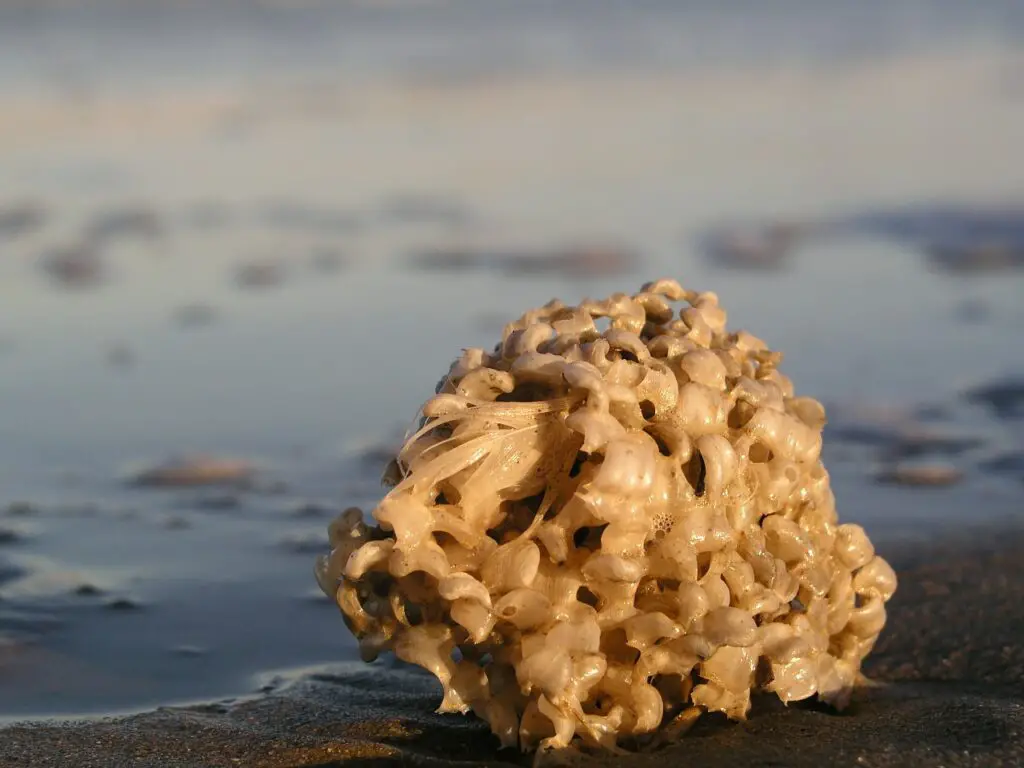
How to know if a sea sponge is dead or alive?
Sea sponges look pretty much the same whether they are dead or alive. If they are really dead then you may get a bit of bad smell from the sponge.
If you touch and press the body of the sponge, you will feel that the elasticity and the resistance of the body to regain its normal shape is lost if it’s dead. Meaning that the dead sponge will change its real shape and will never regain that original living shape if you press it a bit hard.
Near dead sponges inside the water, you will find bubbles of gasses in the water surrounding the dead body of the sponge.
It’s because most sponge species cannot survive even with brief exposure to air as they are prone to tiny air bubbles blocking their ostia (intake pores).
That results in the tissue surrounding those ostia to die and decompose. The gasses formed by that decomposition create more bubbles that block adjacent ostia; and so on until the entire organism is dead.
The living sponges are found on permanent rock structures. They remain attached to their substratum. And, when they become dead you will find them floating without being fixed to their substratum.
It’s because, as they die, they generally lose their ability and energy to remain fixed to their substratum.
The very simple way to recognize if it’s dead or alive is when you see any sponge lying on the sand at the beach, then be sure that it’s dead. If it was permanently attached to a rocky substrate underwater then there’s actually a decent chance that it’s alive.

Is sponge a plant or an animal?
A sponge is an animal and not a plant. It is classified under Phylum Porifera of the Animal Kingdom.
There’s is no such evidence to consider it under the plants and so, it is not classified in any way under the Plant Kingdom.
Sponges have managed to conceal their true animal nature for several centuries. They are sessile, variously branched, have no apparent way of capturing food or eliminating waste, and show little response to stimuli.
Some species of the sponges are even green due to the presence of unicellular symbiotic algae.
Thus, earlier workers like Aristotle, Pliny, Gerade, Grew, etc. had considered sponges as plants and some have even termed them as non-living organisms.
But it was Robert Grant in the year 1857, who was the first to recognize and prove the true animal nature of sponges.
He had properly explained the canal system of the sponges and how they actually utilize this system in food acquisition, respiratory gas exchange, and also in excretion.
He established the true animal nature of the sponges and said its neither a plant nor a non-living thing.
By 1857, the animal nature of sponges was established on the following grounds:
- Sponges feed on water-dissolved solid particles. Their mode of nutrition thus is truly holozoic in nature. Plants aren’t holozoic.
- Sponges capture their food to eat. And unlike plants, they do not have the ability to make their own food. But rather they capture tiny microbes and plants from the water that they live in.
- Sponge cells are devoid of cellulose cell walls. Plants have cell walls.
- The life cycle of sponges includes free-swimming ciliated larval stages resembling those of other marine animals. Such larval stages do not occur in plants.
Still, many people believe the sponges to be plants because they do not move, and also because they mainly look more like plants than animals.
But, do always remember the truth that they aren’t plants but animals.
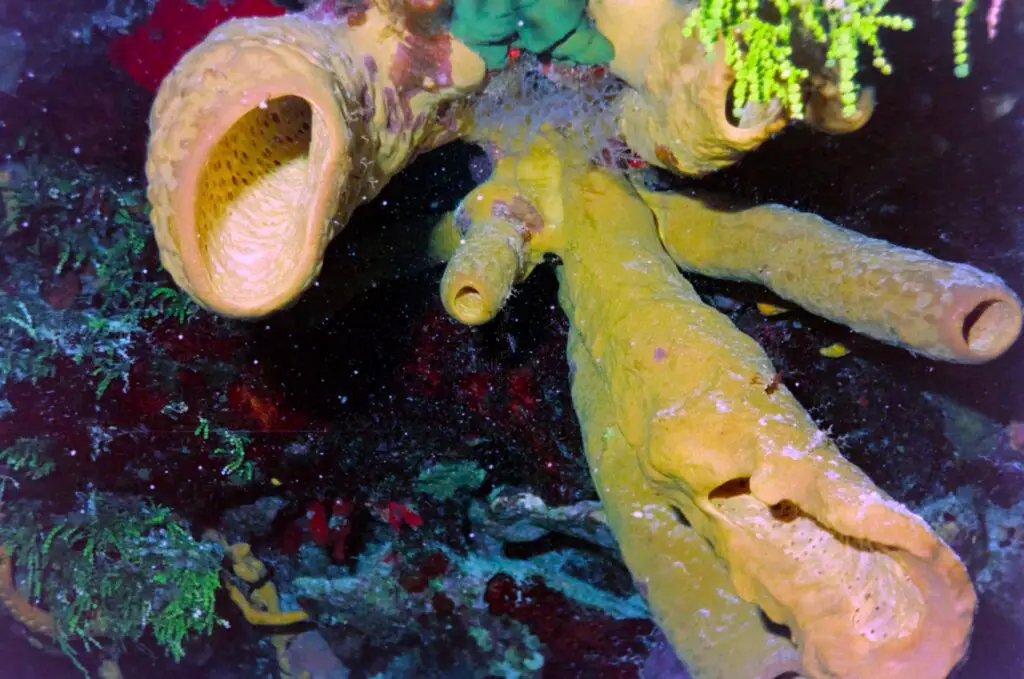
Can sea sponges live out of water?
Sponges cannot live out of the water. If you find any sponge out of the water lying in the sandy banks of the sea, or just floating freely under the influence of the water currents then, probably it’s dead.
There are about 5000 to 18,000 species of Porifera that are known today. Out of them, there are approximately 5,000 living sponge species that are classified in the phylum Porifera,
Only 150 species of sponges are discovered to live in freshwater. The rest of the sponges dwell in salt-water only.
There’s no possible way that they can live above the water surface. They need to be under the water layer in order to run their body physiology.
Just like in order to get food, reproduce, or excrete which are very important for any life form, sponges need to run their water canal system smoothly.
And this is only possible if they lie at the ocean bed fixed with the substratum so that the water can easily flow in and out of the whole body of the sponge.
Moreover, they can’t stay above the water surface because their pores can get filled with air. And, if too many of their pores are filled with air, they will die.
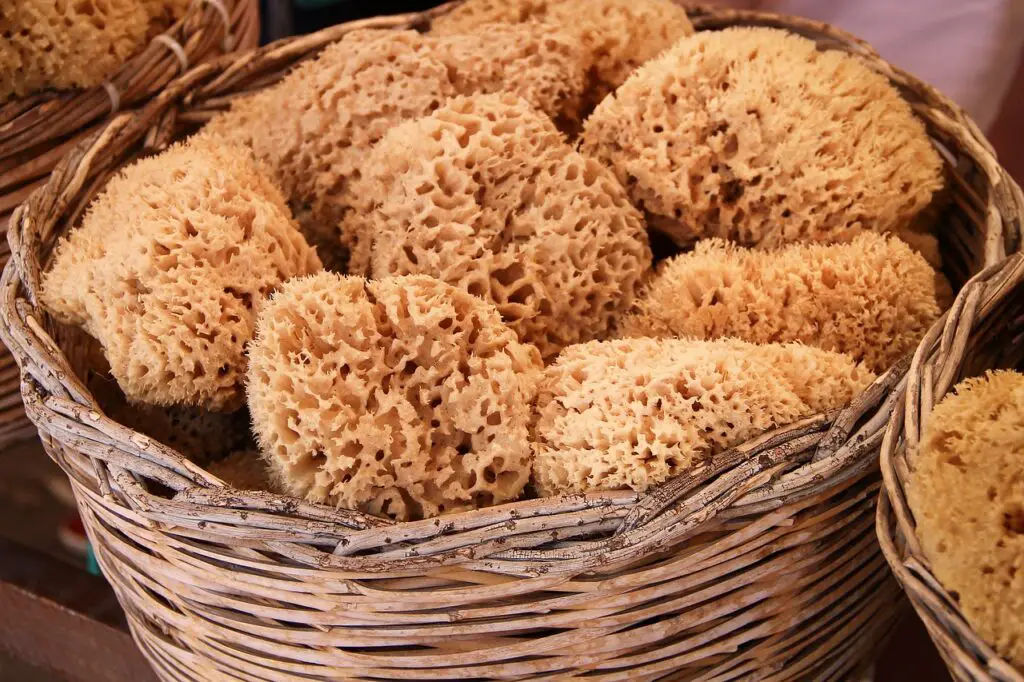
So, Do sea sponges die?
Yes, sponges die. Most of the sea sponges can only survive in saltwater, so if you put them in freshwater, they will quickly die. Only a few species can stay in freshwater.
They are also very sensitive to air and if their pores get filled with air, they will die.
The sponges can live for hundreds or even thousands of years naturally. Some even have a lifespan of more than 2,300 years.
Moreover, they also have the power to regenerate their body parts which are also too beneficial, and so, they don’t die so easily.
They due to their long lifespan have the capability to accumulate anthropogenic pollutants such as metals over a long period of time.
Some sponges are extreme survivors and can easily survive even in extremely unfavorable conditions. They can survive even after the rest of the sponge dies due to the unfavorable conditions.
Their power to regenerate helps them a lot in the extremely unfavorable conditions.
